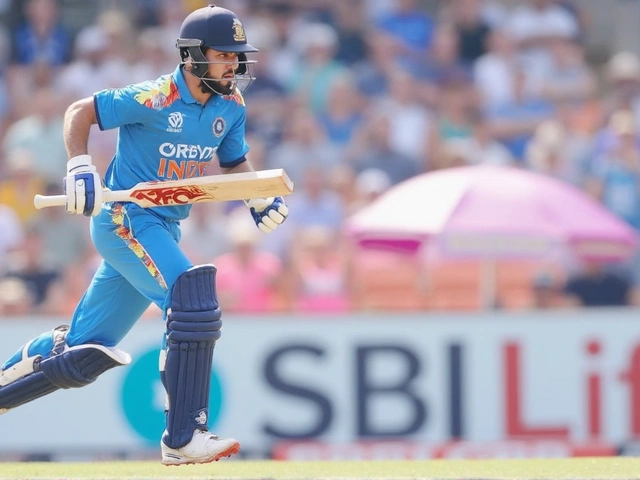Premier League splits 2025 summer transfer window to fit FIFA Club World Cup
Two summer windows, one crowded calendar
England is operating two summer transfer windows for the first time, a direct response to the expanded FIFA Club World Cup. The new shape: a short, early window from June 1–10, 2025, created as an exceptional registration period for clubs preparing for the tournament, and then the main market from June 16 through September 1. It sounds bureaucratic, but it’s about scheduling power. FIFA’s new 32‑team Club World Cup begins in mid‑June, smack in the middle of what used to be quiet preseason time.
The early slot let participating teams add players in time for the competition. England has two entrants: Manchester City and Chelsea. While the special registration rules were designed for those in the Club World Cup, the league allowed all top‑flight teams to do business during that early stretch. One headline move landed outside England’s borders: Trent Alexander‑Arnold left Liverpool for Real Madrid in time to be eligible for the tournament. That signing underlined how global the knock‑on effects would be.
FIFA pushed for the extra registration window so squads could be set before the first ball was kicked on June 15. The Club World Cup, hosted in the United States, is much bigger than the old December version. Instead of a short, seven‑team event, it now spans several weeks and draws heavyweights from every confederation. Leagues had to bend, or risk clubs showing up undercooked.
This isn’t just a novelty; it’s a structural shift forced by the calendar. The European season ended, players grabbed a short break, and within days some were flying to a world tournament. For City and Chelsea, the second week of June wasn’t downtime—it was squad‑building on a stopwatch.
What changed, how the rules work, and why it matters
The main summer market reopened on Monday, June 16, and runs until Monday, September 1, 2025. The deadline also moved. Instead of the traditional 11:00 pm scramble, the window now shuts at 7:00 pm BST. The Premier League, the EFL, and the FA agreed to bring the cut‑off forward to make working patterns more reasonable for staff across the industry—club secretaries, lawyers, medical teams, and logistics people who used to live on caffeine until midnight.
The familiar “deal sheet” safety net stays. Clubs that file the key documents by 7:00 pm get a two‑hour grace period to finalize the details. For cross‑border moves, teams have until midnight to satisfy FIFA’s international transfer requirements. It’s still a race; it’s just earlier and cleaner.
Key dates and mechanics:
- June 1–10: Exceptional registration period for Club World Cup readiness. All Premier League clubs permitted to trade; participants could register players for the tournament if completed in time.
- June 15: Club World Cup starts, prompting a two‑track market—some clubs compete, others scout and wait.
- June 16–September 1: Main window. Domestic deadline at 7:00 pm BST with a two‑hour grace period for submitted deals; midnight for international paperwork.
So who used the head start? Clubs in the tournament moved with intent. Early business gives managers game‑ready depth and clarity on travel, visas, and insurance. For non‑participants, the incentive was smaller: prices can be frothy before a major event, and injuries or breakout performances in June can swing valuations fast. Many chose to watch the tournament play out, then pounce.
Arsenal went early and big once the main window opened, securing Viktor Gyökeres for £63.5 million from Sporting, Martin Zubimendi for £51 million from Real Sociedad, and Noni Madueke from Chelsea for £52 million. That’s a center‑forward with power and movement, a press‑resistant holding midfielder, and a left‑footed winger who can play on either flank. It’s coherent squad building—adding finishing, midfield control, and width in one sweep—while also reshaping the market for rivals chasing similar profiles.
The change also plugs straight into financial planning. The Premier League’s profitability and sustainability rules assess club finances on rolling periods that line up with the end of June. Early June sales can help tidy up a book year before June 30, while buys can be spread via amortization from the contract start date. That’s why you get sudden flurries of exits before month‑end and more incoming deals in early July.
There’s a human side to the new 7:00 pm finish too. Clubs say it reduces last‑minute chaos—medical teams aren’t starting scans at 8:30 pm, legal teams aren’t red‑lining contracts at 10:45 pm, and staff can actually go home. Supporters still get their deadline‑day drama, but it peaks late afternoon and early evening, not near midnight. Broadcasters and digital teams adjust their live shows accordingly.
Tactically, the dual window creates a two‑speed market. If you’re in the Club World Cup, you try to lock in depth before June 10 so the new faces can train, travel, and register. If you’re not, you can hold fire, scout the tournament, and reassess your board’s priorities after a few weeks of top‑level games. That split changes how agents stage negotiations and how clubs structure add‑ons tied to appearances or team progress.
Loans become tricky. Players registered early to be eligible for the Club World Cup might still head out later if minutes dry up after the tournament. Conversely, prospects who shine in the United States could turn short‑term opportunities into permanent moves by late July. The second window is long enough to re‑balance squads once everyone is back from their summer tours.
Managers also have to juggle preseason plans. Clubs usually stagger returns in July; this year, some were competing for a trophy while others were booking Asia or U.S. tours. Sports‑science teams are managing short turnarounds, with tailored loads for players who went deep into June fixtures. That ripple runs into August, when leagues start and sides that played extra matches might prefer more rotation early on.
There are scouting benefits too. The Club World Cup puts South American, African, and Asian champions in direct competition with European sides, on U.S. soil, with plenty of neutral observers. Recruitment teams love that kind of data set—same pitches, same conditions, different styles clashing in quick succession. A handful of names usually explode into the European market after a tournament like this; the timing of the second window lets clubs act on fresh evidence.
For selling clubs, the dynamic cuts both ways. A strong June can inflate price tags; a quiet one can invite bids below expectations. Domestic rivals are tracking the same dashboards—expected goals, pressures, defensive actions under heat. When the market is split by a mid‑June showpiece, timing the bid becomes almost as important as the bid itself.
The timing tweak at the back end matters abroad, too. The earlier English deadline changes the rhythm of deadline day deals with leagues that still close later at night. English teams can agree terms earlier, submit the domestic paperwork by 7:00 pm, then ride the international system’s midnight cutoff if the player is coming from overseas. It still demands coordination, but it cuts out the worst of the late‑night brinkmanship.
For fans, a few practical notes help:
- If a player wasn’t registered by June 10, they couldn’t be used in the Club World Cup, even if a deal was agreed later.
- Expect transfer clusters: early June for tournament registrations; late June for accounting cutoffs; late August for squad finalization.
- That two‑hour post‑deadline window isn’t a free pass. Clubs need a valid deal sheet in by 7:00 pm, or the move dies.
Could this become a template for future summers? The league is framing 2025 as a tailored solution to a unique tournament. But global football isn’t getting simpler. As FIFA and confederations expand competitions, domestic leagues will keep tweaking registration windows, deadline times, and paperwork rules to protect competitive balance and the people who make deadline day function.





